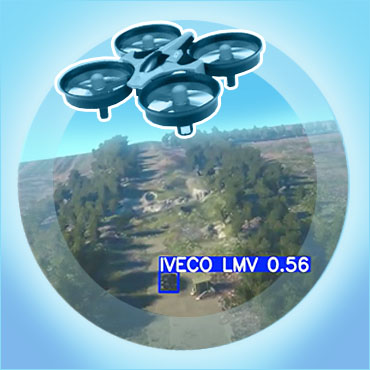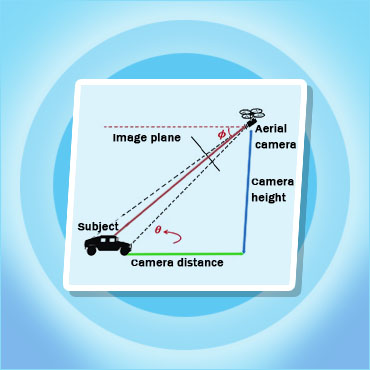Advanced Camouflage against UAV Detection
Kallisto Shield was developed to effectively conceal military assets from advanced AI-enhanced surveillance and targeting systems. This solution addresses the growing capabilities of autonomous drones in precisely detecting, recognizing, and identifying military equipment, even in complex environments.

 Business Challenge
Business Challenge
The modern battlefield has become increasingly transparent due to advancements in surveillance technology. Autonomous systems, including drones equipped with computer vision, pose a significant threat to military assets by detecting, recognizing, and identifying targets with high accuracy. Traditional camouflage methods, such as camo nets and paints, are insufficient against these AI-driven surveillance and targeting systems.
The challenge is to develop a virtual environment that can effectively analyze and predict solutions to conceal military assets from these advanced systems, which integrate data from various sensors to create a comprehensive view of the battlefield.
 Solution Overview
Solution Overview
KallistoAI offers an advanced solution designed to counter the evolving threats posed by AI-enhanced surveillance systems. This solution provides a versatile and cost-effective method to hide, modify, or deceive the signatures of military vehicles. The Kallisto Shield system includes easily interchangeable top cover layers and lateral panels made of different materials, which can alter the vehicle's signature across multiple bands (infrared, radar, visual, thermal, and multispectral). By utilizing these layers, the system can create a multitude of different top-view signatures, effectively masking the vehicle's true identity and location from advanced detection and targeting algorithms.
The solution is not only designed to limit signature acquisition but also to simulate and alter signatures, creating ambiguity that can confuse enemy targeting systems. The Kallisto Shield system is adaptable, allowing it to be mounted on various platforms, thereby offering comprehensive protection across different military assets.
As part of this project, our team implemented an environment in the AirSim simulator that is as close as possible to field conditions. Which allows testing various approaches to Kallisto Shield masking and determining metrics using various computer vision models. This approach to developing a solution from KallistoAI allows for finding the most effective complex for protecting objects with the lowest development costs.


 Technical Details
Technical Details
The Kallisto Shield system has been significantly enhanced through the integration of the QuDrone software platform, a sophisticated solution that combines artificial intelligence and machine learning to control unmanned aerial vehicles (UAVs) in virtual environments. This integration allows us to test the Kallisto Shield to not only obscure and alter vehicle signatures but also leverage virtual models UAVs in real-time adaptability tasks in the field.
AirSim, a cross-platform simulator built on the Unreal Engine, plays a crucial role in the development and testing of control algorithms for the UAVs integrated with Kallisto Shield. By simulating various flight scenarios and conditions, AirSim allows for rigorous testing of the Kallisto Shield capabilities in a virtual environment, ensuring their effectiveness when deployed in the field.
The platform utilizes emulated sensors and visual imaging elements to refine the algorithms used for detecting, classifying, and responding to threats. This capability enhances the Kallisto Shield’s ability to modify its concealment strategies dynamically, making it more effective against modern surveillance systems.
The integration of YOLO v8 (You Only Look Once version 8), a state-of-the-art object recognition algorithm, significantly boosts the system's ability to detect and identify objects in real time. YOLO v8 offers improved accuracy and speed in recognizing multiple objects within a scene, even in complex environments. This capability is vital for the UAVs to swiftly assess and respond to threats, contributing to the Kallisto Shield's overall effectiveness.
The use of AirSim in the testing phase ensures that the Kallisto Shield system is fully prepared for deployment in a variety of terrains and operational conditions. This virtual testing process reduces the time and cost associated with field trials, while significantly improving the system’s reliability and performance.
The integration of the QuDrone platform with the Kallisto Shield system provides significant improvements for camouflage and deception technologies, combining traditional concealment methods with advanced AI capabilities.
Technology Stack

YOLO v8

Python

